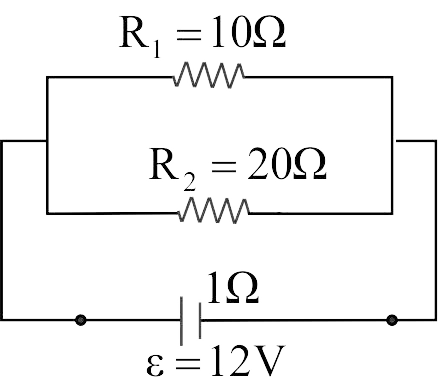357165
Assertion :
Two electric bulbs of 50 and \(100\;W\) are given. When connected in series \(50\;W\) bulb glows more but when connected parallel \(100\;W\) bulb glows more.
Reason :
In series combination, power is directly proportional to the resistance of circuit. But in parallel combination, power is inversely proportional to the resistance of the circuit.
357165
Assertion :
Two electric bulbs of 50 and \(100\;W\) are given. When connected in series \(50\;W\) bulb glows more but when connected parallel \(100\;W\) bulb glows more.
Reason :
In series combination, power is directly proportional to the resistance of circuit. But in parallel combination, power is inversely proportional to the resistance of the circuit.
357165
Assertion :
Two electric bulbs of 50 and \(100\;W\) are given. When connected in series \(50\;W\) bulb glows more but when connected parallel \(100\;W\) bulb glows more.
Reason :
In series combination, power is directly proportional to the resistance of circuit. But in parallel combination, power is inversely proportional to the resistance of the circuit.
357165
Assertion :
Two electric bulbs of 50 and \(100\;W\) are given. When connected in series \(50\;W\) bulb glows more but when connected parallel \(100\;W\) bulb glows more.
Reason :
In series combination, power is directly proportional to the resistance of circuit. But in parallel combination, power is inversely proportional to the resistance of the circuit.
